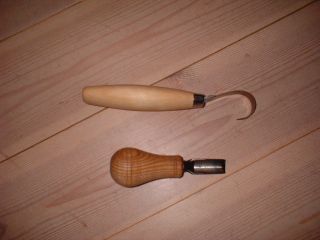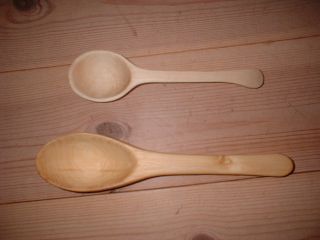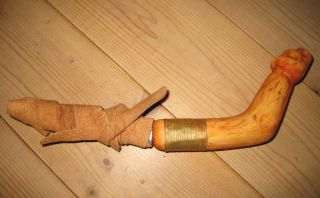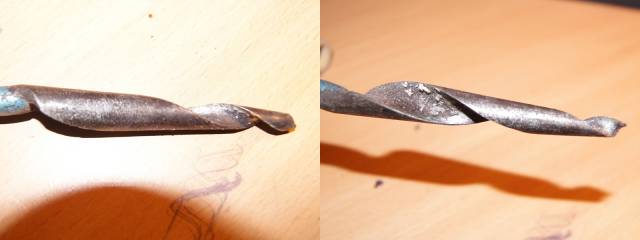|
Other cutting or wood working tools.
 
Some other tools I think are nice to have with me in the woods are a spoon knife (mine is from Mora, Sweden) or a small gouge (also from Sweden, Svante Djerv).
These are wonderful when one carves spoons, cups or bowls. One could of course do without them but they are small and weighs next to nothing. I often have one of these with me in the woods.
Above right are a picture of two spoons made with a knife and one of these tools.
The gouge is used by pressing the edge down into the work piece cutting slivers of wood away. It is best to begin in the middle and work your way outwards.
The spoon knife is hold in an ice pick grip. The knife is then used to carve out a bowl.
Also here it is samrt to begin in the middle and carve outwards.
I’ve also made myself a crooked knife (North American one handed "draw" knife) after reading about them on the internet.

This seemed like a good idea and could possibly replace the spoon knife and gouge, and at the same time add possibilities to also make other things in the wood.
The force of this knife is that you don`t need a work bench to hold what you are working on in contrast to the European draw knife which is used with both hands.
You just hold the knife in one hand and the work piece in the other.

I made mine from an old mora knife blade and a piece of Bird cherry. I just used a leather thong as a sheath at first (above), but I have made a new sheath with a button closure.
The blade is chisel ground, and has a small hook. The hook is not necessary but I wanted to use it as a spoon knife as well as a draw knife.
I have made a spoon with this knife once when I forgot my utensils.
The knife could be sharper, besides I’m not sure if I think this is a great tool. More testing is needed.
Another tool I sometimes carry with me (usually in spring tapping birch) is a wood drill called a Navar.


Navars are normally used as boat building tools or for drilling holes when building a log house, but they could be used for drilling holes in any wooden object.
They are fairly easy to make (for a smith).
Navars are found in all sizes, from some millimiters thick to those several centimeters in diameter.
|